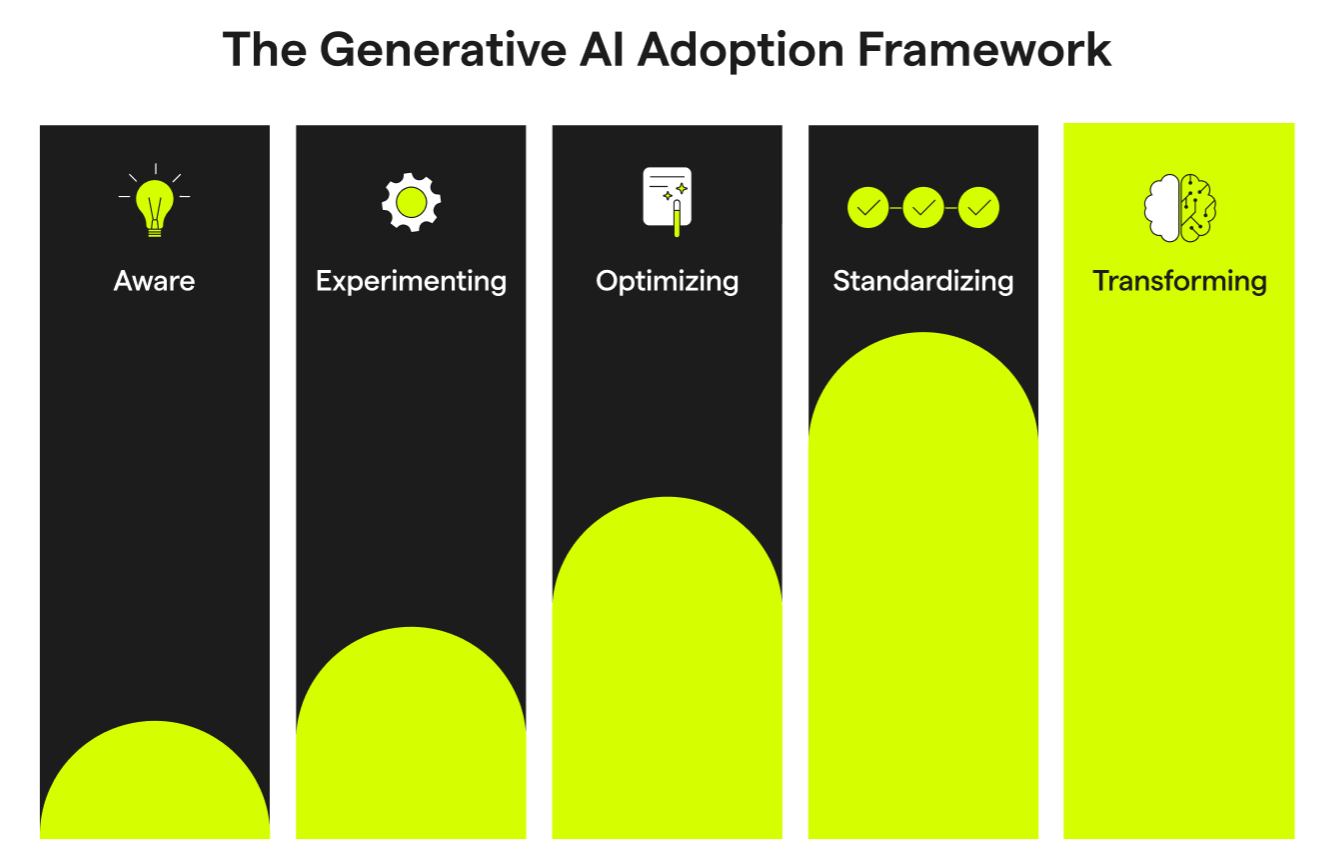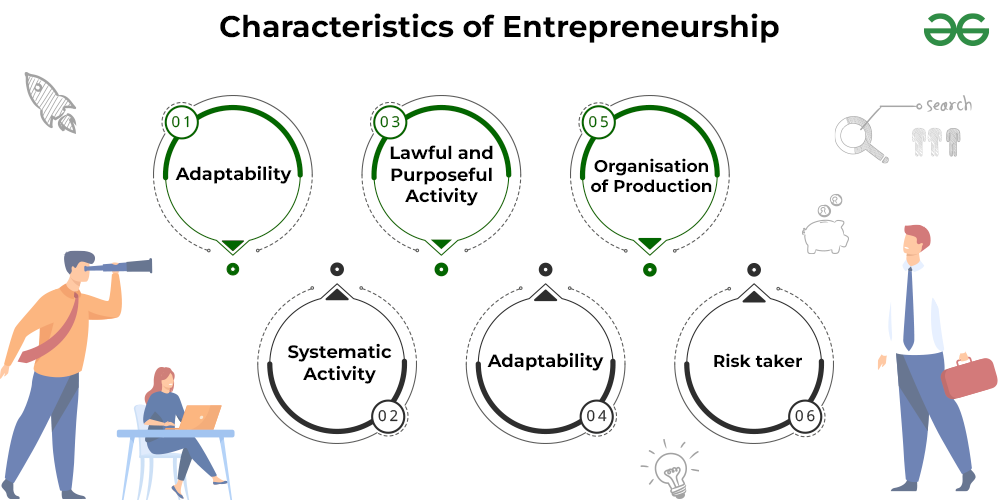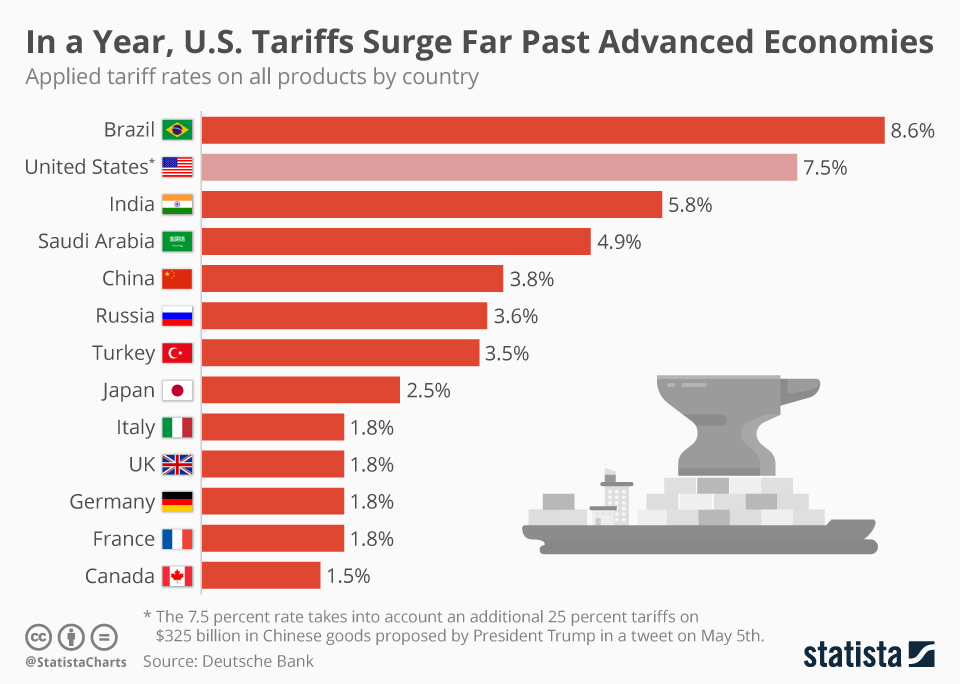Generative AI adoption is reshaping the landscape of technology at an unprecedented pace, eclipsing even the early days of the internet and personal computers. With nearly 40 percent of Americans engaging with generative AI tools like ChatGPT, the statistics reveal a significant shift in how AI technology acceptance is influencing both work and home environments. This swift embrace of generative AI in business is indicative of its profound impact across various sectors, as users discover innovative ways to enhance productivity and creativity. As organizations begin to recognize the advantages of generative AI, the demand for insights into AI adoption statistics becomes paramount. By understanding this transformative trend, businesses can position themselves strategically to harness the power of generative AI effectively in their operations.
The rapid integration of advanced AI technologies has initiated a new era in digital innovation, often referred to as generative artificial intelligence. Synonymous with tools such as ChatGPT, this cutting-edge technology is making waves across corporate domains, fundamentally redefining operational efficiencies and customer interactions. As businesses navigate the complexities of AI technology acceptance, the effects of generative AI on productivity and creativity become imperative areas of exploration. Moreover, analyzing user engagement and adoption rates offers crucial insights for future growth strategies. In this context, businesses are increasingly considering the broader implications of generative AI, evaluating its potential to become a cornerstone of modern operational methodologies.
Generative AI Adoption: A Rapid Shift in Technological Integration
The rapid adoption rate of generative AI has intrigued experts and industry leaders alike. According to recent statistics, nearly 40% of Americans aged 18-64 have engaged with generative AI tools like ChatGPT within just two years of their introduction. This statistic stands in stark contrast to the initial adoption of the internet and personal computers, which saw only a 20% usage rate during comparable time frames. The fast-paced integration of AI technology into everyday tasks indicates not only a technological shift but a significant cultural change in how society interacts with digital systems.
The implications of generative AI adoption extend beyond mere numbers; they suggest a fundamental transformation in a variety of sectors. Businesses are beginning to integrate AI to enhance productivity and improve decision-making processes, showcasing the impact of generative AI on workflows. As organizations recognize the advantages of employing AI-driven solutions, we can anticipate a steep increase in innovative applications that redefine traditional work practices.
Understanding AI Adoption Statistics and Their Significance
AI adoption statistics reveal critical insights into the behaviors and patterns surrounding generative AI use among different demographics. For instance, data indicates that younger individuals and those with higher education levels tend to leverage AI more frequently at work. This pattern mirrors previous technology adoption trends, where proficiency and comfort with new innovations favor younger generations. Each statistic reinforces the notion that generative AI is not merely a novelty but a pivotal tool that is changing the landscape of professional environments.
Furthermore, understanding these statistics can aid businesses in tailoring their strategies for workforce training and technology integration. By analyzing the demographics most likely to adopt generative AI, companies can implement targeted initiatives that equip employees with the necessary skills and knowledge to maximize the effectiveness of this technology. This understanding could prove vital in achieving competitiveness in an increasingly AI-driven economy.
The Impact of Generative AI on Business Operations
Generative AI is significantly impacting business operations across various industries, from enhancing productivity through automation to facilitating creativity in design processes. Companies that have embraced these technologies report gains in efficiency and output quality, showing that generative AI can serve as a complement to human expertise rather than a replacement. Many businesses are currently experimenting with integrating AI into their daily functions, using it for tasks such as drafting emails, generating reports, or conducting market research.
Moreover, as organizations navigate the practical applications of generative AI, they are simultaneously exploring moral and ethical implications. Discussions around data privacy, algorithm bias, and job displacement are pivotal, urging business leaders to establish guidelines that govern responsible AI use. By proactively addressing these concerns, companies can create sustainable frameworks for AI integration that align with both technological advancement and societal expectations.
AI Technology Acceptance Across Different Demographics
The acceptance and adoption of AI technology varies widely across demographic groups, with observable disparities in usage patterns among men, women, and different age brackets. For instance, men and younger individuals appear more inclined to utilize generative AI in their workplaces compared to their female counterparts or older generations. This trend signifies the need for businesses to address the potential barriers limiting AI adoption among underrepresented groups.
Conversely, the growing acceptance of AI tools among various occupational groups showcases the technology’s broad applicability beyond traditional white-collar roles. As generative AI becomes increasingly embedded in workplace environments—evident in both STEM fields and blue-collar jobs—it highlights its potential to enhance a wide array of professional functions. Companies that recognize and leverage this diversity in AI technology acceptance will likely foster a more inclusive and innovative workplace culture.
ChatGPT Usage: Transformation in Communication and Creativity
The rise of ChatGPT as a major player in the generative AI landscape illustrates a significant transformation in communication methods for individuals and businesses alike. Users have adopted ChatGPT for various applications, from drafting marketing messages to facilitating brainstorming sessions, underscoring its versatility as a tool for both professional and personal use. As the tool continues to evolve, we can expect further innovations that will empower users to explore new creative avenues.
Nevertheless, the usage of ChatGPT also reflects the broader cultural shifts regarding technology reliance. Users must balance the ease of AI assistance with the importance of maintaining their unique voice and creativity. As organizations incorporate ChatGPT into their workflows, they should foster a culture that encourages human creativity while leveraging AI as a supportive resource, ensuring that generative AI enhances—rather than replaces—authentic expression.
Complementary Innovations: Generative AI and Its Predecessors
Generative AI builds on the technological foundations laid by personal computers and the internet, emerging as a complementary innovation that enhances existing capabilities. Given that these previous technologies have become ubiquitous, the transition to adopting generative AI seems smoother in comparison to earlier technological launches. This synergy allows users to harness the full potential of generative AI, ultimately leading to profound changes in productivity and creativity.
To further maximize the benefits of generative AI, it is essential for businesses to acknowledge the interdependence of these technologies. By integrating generative AI into already established digital frameworks, organizations can streamline processes and refine their operations. This understanding paves the way for smarter innovation, ensuring that generative AI evolves beyond being just another tool—it becomes a vital component of modern business strategy.
Businesses’ Approach to Generative AI Integration
To capitalize on generative AI’s rapid adoption, companies must be proactive in their approach to integration within their operations. This requires a commitment to experimentation, with businesses encouraged to explore various applications across departments. This informal usage highlights the potential value of integrating generative AI into formal processes, transforming how teams collaborate and communicate.
Moreover, businesses must also recognize that the continued development of generative AI depends on effective collaboration between technology providers and their clients. Companies working together to refine applications and share feedback will help drive innovations that align with real-world needs. The organizations that best harness this synergy will not only benefit from immediate gains but create a blueprint for sustainable growth in an era increasingly dominated by AI technology.
Preparing for the Future: Challenges and Opportunities in AI Adoption
As generative AI increasingly permeates various sectors, organizations must prepare for both the opportunities and challenges this technology presents. On one hand, AI adoption can drive efficiency and innovation, providing businesses with a competitive edge. On the other hand, companies should be wary of the risks associated with over-reliance on technology, such as potential job displacement and ethical concerns regarding AI-generated content.
To navigate these challenges effectively, businesses need to establish comprehensive strategies focused on employee training and continuous learning. This ongoing investment in human capital will be crucial in ensuring that the workforce is equipped to thrive in an AI-driven environment. By fostering a culture of adaptability and support, organizations can better position themselves to harness the benefits of generative AI while addressing potential pitfalls.
Emerging Trends in Generative AI Development
The landscape of generative AI is evolving at a rapid pace, with emerging trends poised to reshape the technological framework in various sectors. For instance, improvements in natural language processing and machine learning algorithms continue to enhance the capabilities of platforms like ChatGPT, driving users to experiment with more sophisticated applications in their work and personal lives. These trends suggest that generative AI will become even more integrated into vital processes, further solidifying its role as an indispensable tool for innovation.
As these trends unfold, companies must remain vigilant and adaptable to stay ahead of the curve. By following the advancements in generative AI, organizations can strategically position themselves to capitalize on new opportunities. Collaborating with AI developers to provide insights on required functionalities can foster innovations that lead to groundbreaking applications and solutions tailored to meet the evolving demands of the market.
Frequently Asked Questions
What are the latest AI adoption statistics related to generative AI adoption?
As of August 2024, nearly 40% of U.S. adults aged 18-64 have used generative AI technologies like ChatGPT. Of employed individuals, 28% reported using it at work while 33% utilized it outside of work, showcasing a significant adoption rate that surpasses earlier technologies such as PCs and the internet.
How is generative AI transforming business practices?
Generative AI is revolutionizing business by automating content creation, enhancing productivity, and supporting decision-making processes. Its adoption allows companies to streamline tasks such as drafting emails, conducting research, and generating reports, leading to increased efficiency and innovation.
What impact is generative AI expected to have on the economy?
The rapid adoption of generative AI suggests a considerable economic impact. It is projected to enhance productivity across sectors, promote job creation in tech-related fields, and potentially generate billions in economic output as businesses increasingly leverage this technology.
How does generative AI adoption compare to previous technologies like the internet and personal computers?
Generative AI is being adopted at a faster pace than both the internet and personal computers. While it took the internet two years to reach a 20% usage rate, generative AI surpassed that with nearly 40% of users within a similar timeframe, indicating its significant market penetration.
What factors contribute to the swift adoption of generative AI technologies?
The rapid adoption of generative AI can be attributed to pre-existing technology infrastructure such as personal computers and the internet, which enable users to more easily integrate new AI tools into their daily routines, both at work and home.
Which demographics are more likely to adopt generative AI?
Adoption of generative AI is notably higher among younger individuals, men, and those with advanced degrees or in white-collar jobs. This trend reflects broader patterns of technology acceptance seen in previous generations with similar innovations.
What tasks do people use generative AI for at work and home?
At work, generative AI is often utilized for drafting emails, data analysis, and report generation. At home, it supports research and content creation for personal projects, showcasing its versatility in various applications across settings.
Should businesses take action based on generative AI adoption trends?
Yes, businesses should closely monitor the trends in generative AI adoption. Those that effectively harness this technology can gain a competitive edge and drive innovation, leading to substantial economic opportunities as the landscape evolves.
What does the future hold for generative AI in business?
The future of generative AI in business looks promising, with expectations of further integration into daily operations. Companies that identify effective applications and develop solutions around generative AI will likely reap significant economic rewards in the next decade.
How does generative AI relate to overall AI technology acceptance?
Generative AI is a crucial aspect of the broader AI technology acceptance landscape. Its rapid adoption indicates a growing recognition of AI’s potential, driving both public interest and investment in further advancements across various industries.
| Key Point | Details |
|---|---|
| Rapid Adoption of Generative AI | 40% of U.S. adults aged 18-64 have used generative AI, significantly higher than internet and PC adoption rates. |
| Usage at Work vs. Home | 28% of employed individuals have used AI at work while 33% used it at home. |
| Demographic Differences | Younger, more educated individuals, especially men in STEM and management roles, are more likely to use AI. |
| Informal Use | Many users leverage generative AI informally for tasks like writing emails and conducting research. |
| Implications for Businesses | Businesses must adapt to generative AI integration to stay competitive as it becomes essential in various sectors. |
Summary
Generative AI adoption has outpaced that of previous technologies like the internet and personal computers, signaling a transformative shift in how Americans engage with digital tools. With nearly 40% of adults utilizing this innovative technology in both personal and professional settings, understanding the implications of generative AI on the workforce and economic landscape is crucial. Businesses that embrace generative AI early and leverage its capabilities are likely to reap significant rewards. As this technology matures, it promises to reshape various sectors, underscoring the need for proactive adaptation in business strategies.



